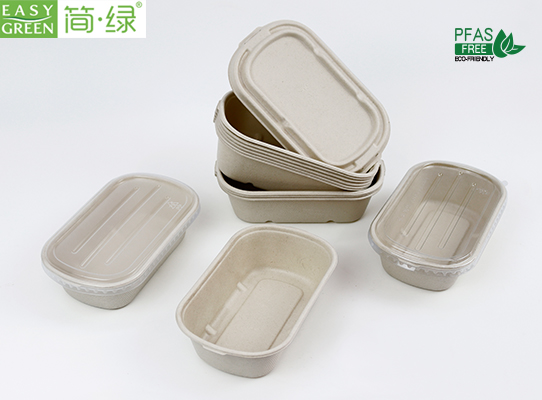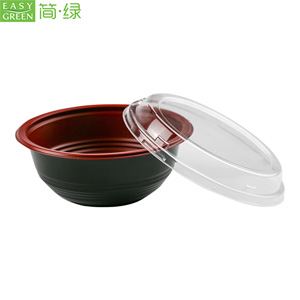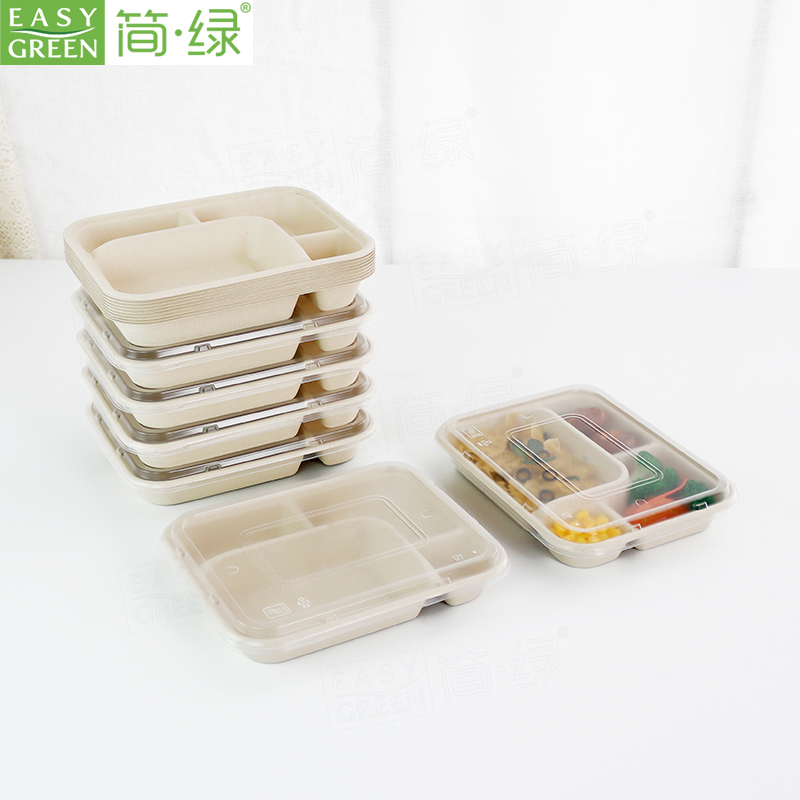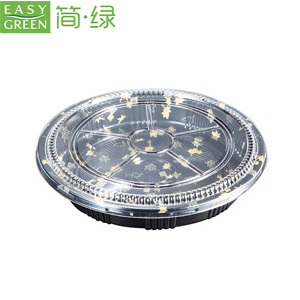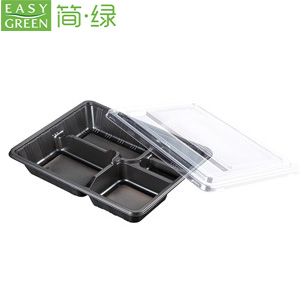As environmental protection becomes more prevalent, various industries are searching for new products to replace plastic in order to limit its usage. In the food industry, with the huge amount of plastic lunch boxes used, environmentally friendly food packaging materials such as environmentally friendly food packaging materialshave emerged and become popular overseas.
Environmentally friendly food packaging materials: paper lunch boxes
When it comes to environmentally friendly food packaging materials, paper is the most familiar material. "Replacing plastic with paper" is naturally the first solution that comes to mind. Paper is the most optimal material in terms of recycling, renewable utilization, and degradability.
But where does paper come from? The production of paper requires a large amount of forest resources, and large-scale logging causes soil and water erosion, which is clearly not in line with the country's situation. On the other hand, transforming paper into lunch boxes requires turning the paper into pulp, and the production of pulp causes serious water pollution and high production costs. This makes the price of paper tableware relatively high and difficult for consumers to accept.
Environmentally friendly food packaging materials: biodegradable lunch boxes
The second option is biodegradable plastic. The so-called environmentally friendly food packaging materials are made by adding additives such as photosensitizers and starch to the production process of plastic, and these products can indeed decompose after being exposed to the natural environment for three months.
Environmentally friendly food packaging materials: plant fiber lunch boxes
Plant fiber is a type of fiber powder obtained by crushing agricultural waste such as straw and sugarcane residue. In the production process, the residue is first made into pulp board, then crushed and mixed with water to make a concentrated slurry, and finally molded by hot pressing. The biggest advantage of environmentally friendly food packaging materials plant fiber is that sugarcane residue and straw are agricultural waste products, originating from sugar factories and fields, respectively. The raw material source is very rich, which is currently the main reason why it is widely favored. Moreover, it is a natural food material that can be naturally degraded without doubt. As for the problems of oil leakage and lack of waterproofing in plant fiber, a new environmentally friendly lunch box film has been developed that can be perfectly solved by vacuum absorption on the surface. With this combination, the environment of lunch boxes will be greatly revolutionized in the future.
Some environmentally friendly lunch boxes on the market have serious quality problems (excessive residual evaporation), mainly because the manufacturers used a large amount of mineral materials such as calcium carbonate and talcum powder as well as waste plastic during production to reduce the cost of production. This caused the mineral materials and additives added in the lunch box to dissolve in water, vinegar, and oil contained in the food, which can cause various diseases such as poor digestion, local pain, liver disease, gallstones, heavy metal poisoning, and have a serious impact on the intellectual development of children.
Environmentally friendly food packaging materials refer to food containers made of materials that are harmless to humans, non-toxic, odorless, easy to degrade, and do not cause pollution in the production, use, and disposal process. The product quality fully meets the national food hygiene requirements, and after use, the product has the characteristics of easy recycling, disposal, and digestion. Environmentally friendly tableware does not equal degradable tableware, which is just one type of environmentally friendly tableware.
 English
English 
